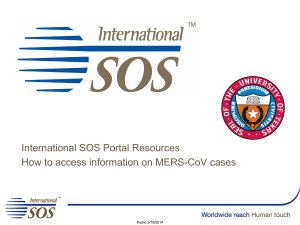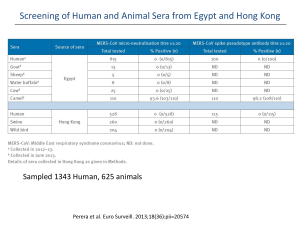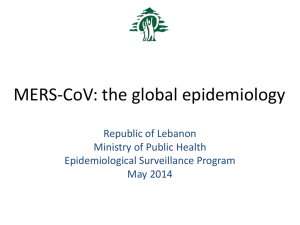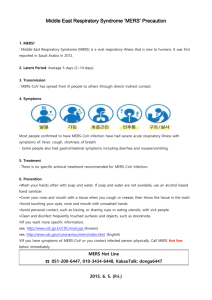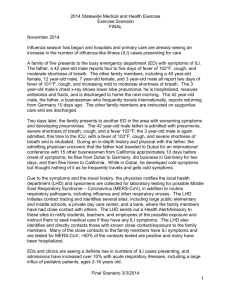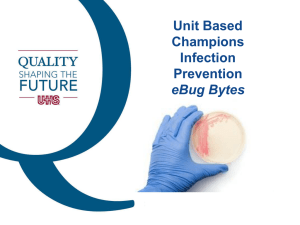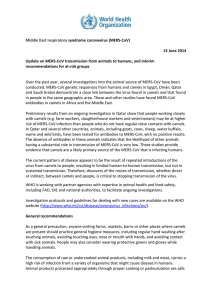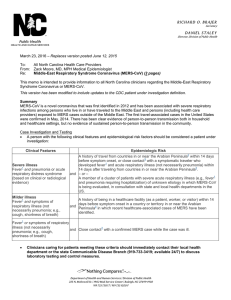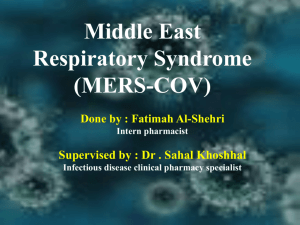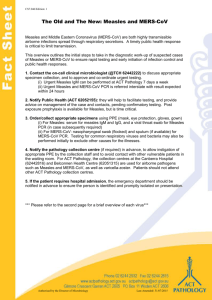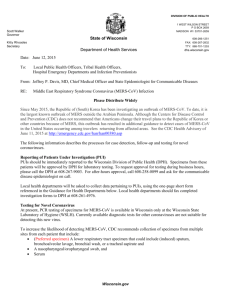A hospital cluster
advertisement
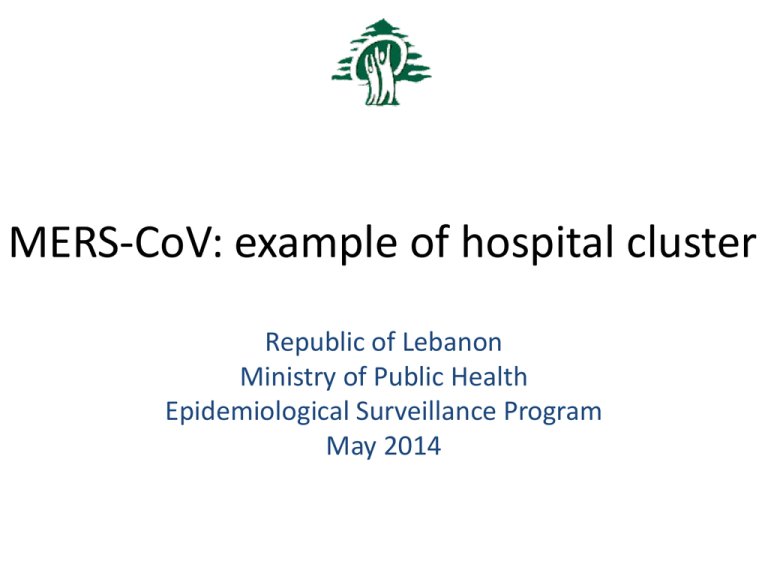
MERS-CoV: example of hospital cluster Republic of Lebanon Ministry of Public Health Epidemiological Surveillance Program May 2014 Source • Hospital Outbreak of Middle East Respiratory Syndrome Coronavirus. • A. Assiri, A. McGeer, T. M. Perl, C. S. Price, A. Al Rabeeah, D. Cummings, Z. Alabdullatif, M. Assad, A. Almulhim, H. Makhdoom, H. Madani, R. Alhakeem, J. Al-Tawfiq, M. Cotten, S. Watson, P.Kellam, A.Zumla, and Z. Memish, for the KSA MERS-CoV Investigation Team • n engl j med 369;5 nejm.org august 1, 2013 Summary 1 • Between April 1 and May 23, 2013, 23 cases of MERS-CoV infection were reported in the eastern province of Saudi Arabia. • Symptoms included: – – – – – 87%: fever 87%: cough 87%: abnormal chest radiographs 48%: shortness of breath 35%: gastrointestinal symptoms • As of June 12: – 65%: died – 26%: recovered – 9%: remained hospitalized • The median incubation period was 5.2 days, 95% CI, [1.9 to 14.7] Summary 2 • A total of 21 of the 23 cases were acquired by person-to-person transmission: – In hemodialysis units – Or in intensive care units – Or in-patient units in three different health care facilities. • Sequencing data from four isolates revealed a single monophyletic clade. • Among 217 household contacts identified, MERS-CoV infection developed in: – 5 family members (3 with laboratory-confirmed cases). • Among more than 200 health care worker contacts identified, MERS-CoV infection developed in: – 2 health care workers (both with laboratory-confirmed cases). By time General cluster Dialysis cluster ICU cluster Medical ward Health care provider Other health facilities Family cluster Laboratory testing • Laboratory testing for MERS-CoV remains a challenge. • Validated serologic assays are not yet available. • In this cluster, – Results of throat swabs were occasionally negative and repeat testing for MERS-CoV was required. – It seems prudent to conclude that one cannot reliably rule out MERS-CoV disease on the basis of a single negative test when a patient presents with the appropriate clinical syndrome and epidemiologic exposure. – There is evidence that repeat testing and tests on sputum or bronchoalveolar-lavage fluid are of value in improving diagnostic accuracy.
